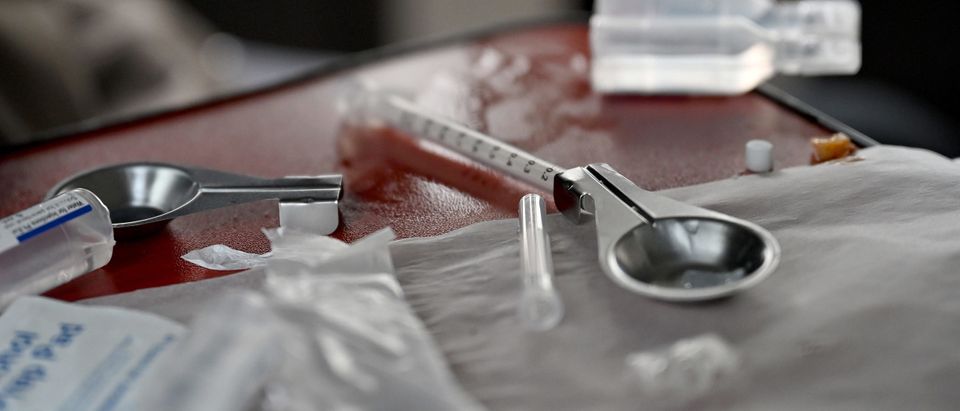Editor’s note: We endeavor to bring you the top voices on current events representing a range of perspectives. Below is a column arguing that safe injection sites are an effective way of combating the drug overdose crisis. You can find a counterpoint here, where Maurice Richards argues that safe injection sites will only exacerbate the drug overdose crisis.
In a sharp break with precedent, the White House has signaled an openness to implement harm reduction strategies to help reduce the scourge of drug overdose deaths.
The Justice Department recently told theAssociated Press it is “evaluating supervised consumption sites, including discussions with state and local regulators about appropriate guardrails for such sites, as part of an overall approach to harm reduction and public safety.”
Supervised consumption sites are sterile locations where a person can have the drugs they procured on the street tested for potential life-threatening contaminants and can consume them under medical supervision. If the person has an overdose or other medical complications, physicians can intervene in a timely manner to save the person’s life. These harm reduction sites typically also offer rehabilitation and recovery services to individuals who wish to overcome their drug addictions.
The primary purpose of harm reduction strategies like these is to minimize the loss of life due to drug use while also intervening where possible to reduce the demand for dangerous narcotics. The mainstream approach to combating drug abuse in the United States for the past century, by contrast, has been to ignore the demand-side issues — many Americans’ desires to use drugs — and, instead, ineptly try to choke off the supply of drugs and criminalize their use.
By any measure, the war on drugs and the federal government’s supply-side approach has been an abysmal failure. Overdose deaths have skyrocketed from fewer than 20,000 in the year 2000 to more than 90,000 by 2020. Violent cartels have trafficked dangerous and often tainted drugs across the United States to service the persistent demand, and smugglers, always eager to make their job easier, have focused on developing more potent and dangerous drugs that occupy less space.
The result has been the proliferation of new drugs like fentanyl, a synthetic opioid that can be fatal in doses as small as two milligrams. Today, drugs marketed on the street as cocaine and heroin are frequently contaminated with fentanyl, a drug that is cheaper to produce and easier to smuggle. A Drug Enforcement Administration analysis of overdose deaths in Philadelphia in 2017, for example, revealed that two-thirds of overdose deaths involved fentanyl and there were high co-occurrences of cocaine and heroin — indicating most of these individuals thought they were purchasing and using something other than fentanyl. “In 2020, 94% of opioid-involved unintentional overdose deaths had positive detections for fentanyl or a fentanyl analog,” Philadelphia reported.
Advocates in Philadelphia tried to establish a safe injection site in 2018 to prevent more overdose deaths, but the Trump administration’s Justice Department sued to block that site by arguing it amounted to a “crack house” rather than a medical facility.
When policymakers have permitted harm reduction strategies, rather than failed bans on drugs, the results have been tremendously positive. The American Medical Association says, “Studies from other countries have shown that supervised injection facilities reduce the number of overdose deaths, reduce transmission rates of infectious disease, and increase the number of individuals initiating treatment for substance abuse disorders without increasing drug trafficking or crime in the areas where the facilities are located.” Australia, Canada and Germany have had success with supervised injection sites. And detailed research published by the National Institutes of Health also clearly shows supervised injection sites drastically reduced overdose mortality and the spread of HIV.
Based on actual data, it’s difficult to argue against the effectiveness of supervised injection sites and other harm reduction approaches as the preferred method for combating drug abuse and reducing overdose deaths. Unfortunately, opponents often appeal to emotionally charged arguments glorifying America’s traditional approach of strict prohibition and suggest a more expansive police state can somehow turn around decades of failure in the war on drugs. When Republican New York Rep. Nicole Malliotakis heard of the Justice Department’s plan, for example, she told the AP, “Instead of stopping the deadly drugs streaming over our border, putting drug dealers behind bars and helping people receive the long-term treatment they need to overcome addiction, Democrat leadership is enabling illegal drug use.”
Similarly, and sadly, rather than talk about big government’s expensive and failed drug war, effective ways to reduce overdose deaths, or drug decriminalization, many Republican politicians and conservative news outlets have painted the latest harm reduction efforts as the “Biden administration’s funding of crack pipes.”
The big government approaches many Republicans are championing gave rise to the failed war on drugs, international drug cartels and the development of newer, more dangerous drugs, including fentanyl. Those failed government policies also criminalize Americans for choosing what to put in their bodies, marginalize users in society, make it difficult for them to seek treatment and medical help and erect many barriers that prevent people from turning their lives around.
Some Republicans may think it’s politically beneficial to take jabs at the Justice Department’s life-saving harm reduction efforts, which would largely occur in Democratic-run big cities that want to try a data-backed approach to reduce drug overdoses. But in doing so, they’re also glorifying the failed war on drugs and advocating disastrous big government policies that have proven to be ineffective and counterproductive for decades.
Geoffrey Lawrence is director of drug policy at Reason Foundation.


